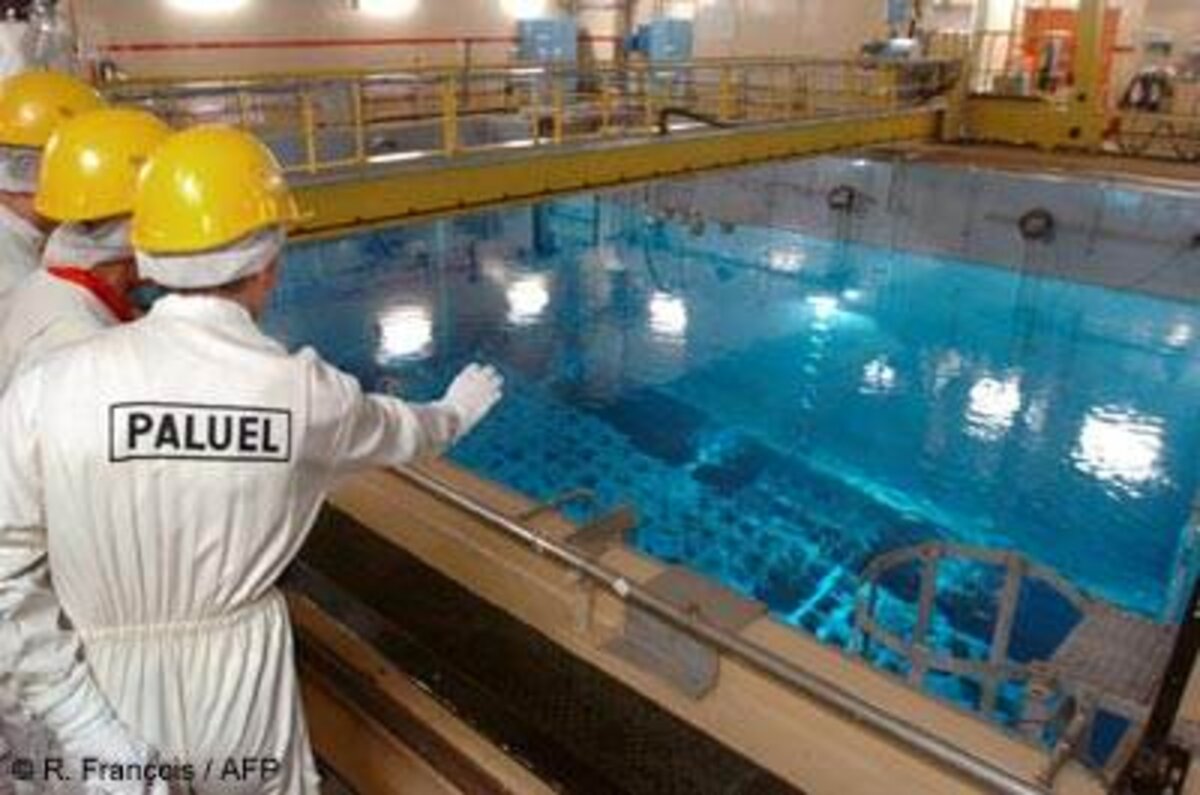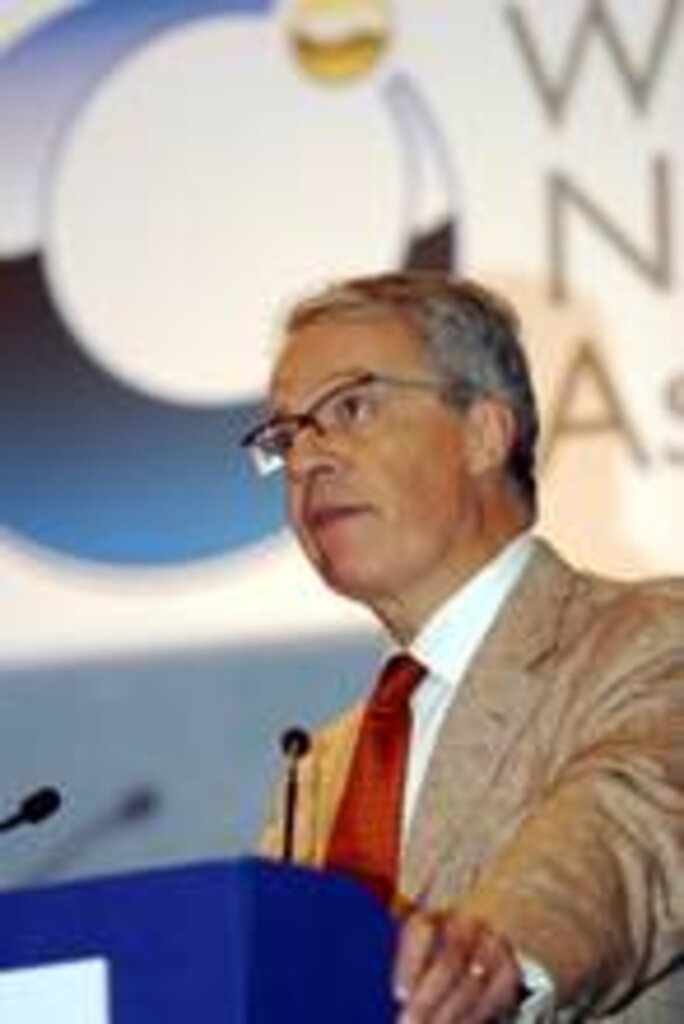A court hearing in Normandy on June 16th provided a revealing insight into official secrecy over the dangers to which are exposed many of the 125,000 people employed in the nuclear industry in France, one of the world's leading operators and exporters of civil nuclear power technology. It centres on the case of a welder exposed to nuclear contamination at a local power plant, but whose employer refuses, like others in the industry, to consider the incident as a workplace accident. Mediapart has obtained exclusive access to an internal document from French utilities giant EDF instructing nuclear power plant directors when not to declare incidents of on-site irradiation and contamination. Jade Lindgaard reports.
-------------------------
On November 6th 2007, industrial welder Dominique Samson, 53, was working alongside a pipefitter inside the reactor containment building of the Paluel nuclear power plant in Normandy, northern France, which is run by the French utilities company EDF.
EDF operates most of the 20 nuclear power plants spread across France, amounting to a total of 59 nuclear reactors, and which provide more than 75% of the country's electric power production.
An employee of Endel, an industrial maintenance company owned by GDF-Suez and sub-contracted by EDF, Samson has 30 years' professional experience as a welder and earns a monthly take-home pay of 1,300 euros.
That day he was carrying out welding work to replace the tap on a pipe, under the protection of a neutralizing filter, a machine that removes radioactive particles from the air and which was plugged into a power socket two floors below him.

Suddenly, the machine stopped working - someone removed its plug from the socket - exposing him immediately to the radioactivity emitted during the welding operation.
"In the time it took for me to get out, in a few seconds, I was contaminated," recalled Samson, who continues to work for Endel. "As incredible as it may sound, there are not enough electric sockets in nuclear power plants. The buildings are labyrinthine, with people everywhere who don't see what one or the other is doing." Samson plugged the air neutralizer back in a socket and completed his welding task.
When Samson left the ‘controlled zone' that represents the radioactive area of the plant, he went through the routine of passing through a security gate, called the C1, which sounded the alarm that he was carrying radioactivity. When this happens, the person is prevented from passing through the gate. Following procedure, Samson undressed and presented himself at a second control gate, the C2. There the detectors found external contamination of his body, with radioactive particles on his face and in his hair. He was taken to the infirmary where he was de-contaminated using a hose and shampoo.
By then, however, it was too late to avoid the internal body contamination he had suffered, which an examination found had left in his organism traces of cobalt 58 and 60, a radioactive isotope, and antimony, a metalloid. The pipefitter with whom he was working was similarly contaminated.
"I was told that what I had been hit with wasn't very much, that it was under the quarantine level, but that didn't really reassure me," said Samson. "I have a colleague who today suffers from lung cancer even though he has never smoked," he added, referring to a workmate other than the pipefitter.
During the 48 hours that followed the incident, Endel failed to notify the social security authorities of the contamination of the two workers. With the help of staff representatives, Samson contacted the public work inspection department to lodge a complaint. As a result, the work inspectorate brought a suit against Endel, which was given a 135-euro fine in October 2009 for not having declared the accident. The company appealed the decision.
"It is unacceptable," commented Samson's lawyer Camille Lasoudris. "Normally, when the work inspectorate demands that an employer declares a workplace accident, he does so." The case finally came before a Rouen petty crimes court (1) this week, where magistrates on Thursday deferred a decision until September 29th. During the June 16th hearing, Samson said he thought of the eventual consequences of the 2007 as being "a sword of Damocles above my head".
-------------------------
1: Tribunal de police, a court headed by a magistrate and which judges mostly petty offences.
'The official position to take'
During the hearing, the public prosecutor, effectively arguing for the work inspectorate against Endel's refusal to declare the November 2007 incident as a workplace accident, told the court: "It is abhorrent that this accident was not reported. It is by essence an accident within a dangerous context." The defendents were Endel, and the two successive regional directors of Endel's local operations.
The official record of the workplace accident involving Samson and his pipefitter colleague would have had no immediate consequence for Endel. but it would be important, if not vital, for Samson if in the future he develops an illness that could be attributed to the contamination he received in November 2007.
Trade unions have in the past repeatedly warned the management of EDF about the number of accidental contaminations that occur in French nuclear power plants, most of which are managed by EDF. Even at weak doses, contamination can produce numerous physical effects, the consequences of which can include cancer, cardiovascular disease and damage to the reproductive system.
Mediapart has obtained access to an internal, official EDF document (reproduced below) on the subject, written and signed by Yves Garcier, the company's director of Radiation Protection department, and dated July 31st 2008. It is a letter addressed to the managers of the company's nuclear plants, who are advised to not report to social security authorities cases of external physical radioactive contamination of staff even when there is "a suspicion of internal contamination". It also advises they should not report external irradiation of staff when this is recorded as being below the regulatory safety limit.
Contamination implies the deposit of radioactive material upon a person, while irradiation involves a person's exposure to ionizing rays.
"A recurrent and longstanding question is that of the recording and eventual declaration of incidents of contamination and irradiation regarding the regulations concerning workplace accidents," begins Garcier's letter. "Recent positions adopted by union representatives have been the subject of concern for some of you."
"I am making clear the official position that we ask you to take."
The lesson of asbestos
According to EDF's radiation protection director, only those suspected internal contaminations that were the object of medical treatment, and external irradiation that exceeded the regulatory safety level should be declared as "benign accidents", and should only be declared as an accident in the workplace if a person has subsequently received treatment "by an external doctor or a hospital service" outside the plant.

The document makes no mention of the existence of cases of internal contamination, as if such incidents had never occurred. It states that the stance adopted by EDF, the world's largest utilities corporation, is "shared" by Areva, the French energy conglomerate which designs and builds nuclear power plants. This naturally implies that the two companies have consulted together over the issue.
But it also refers to consultations with the UIMM, the French federation of metallurgical industry employers, which over several decades adopted a recalcitrant attitude towards recognizing the established risks of workers' exposure to the carcinogenic material asbestos, the use of which is now outlawed in France.
Mediapart contacted Endel about the case regarding the contamination of Dominique Samson. "It is not a workplace accident because there was no physical lesion observed at the time of the events," claimed an Endel communications official. In the legal documents related to the case, Endel director Patrick Saussaye gave a statement explaining that "until now this type of accident has never been the object of a declaration of a workplace accident".
Annie Thébaud-Mony is a sociologist and research director with the French National Institute of Health and Medical Research, specialized in work-related health hazards and notably concerning the activities of French nuclear industry sub-contractors. "External and internal contaminations should be considered as workplace accidents," she insisted. "They are physical lesions. Radio elements can enter the body and affect cells. This physical alteration places the organism in contact with carcinogenic elements."
-------------------------


